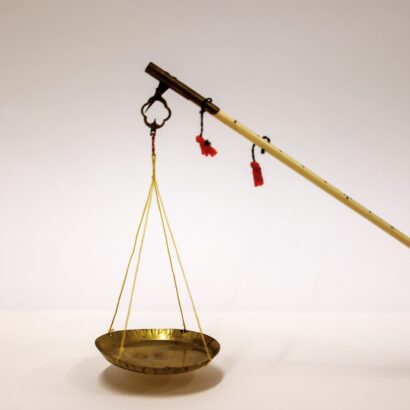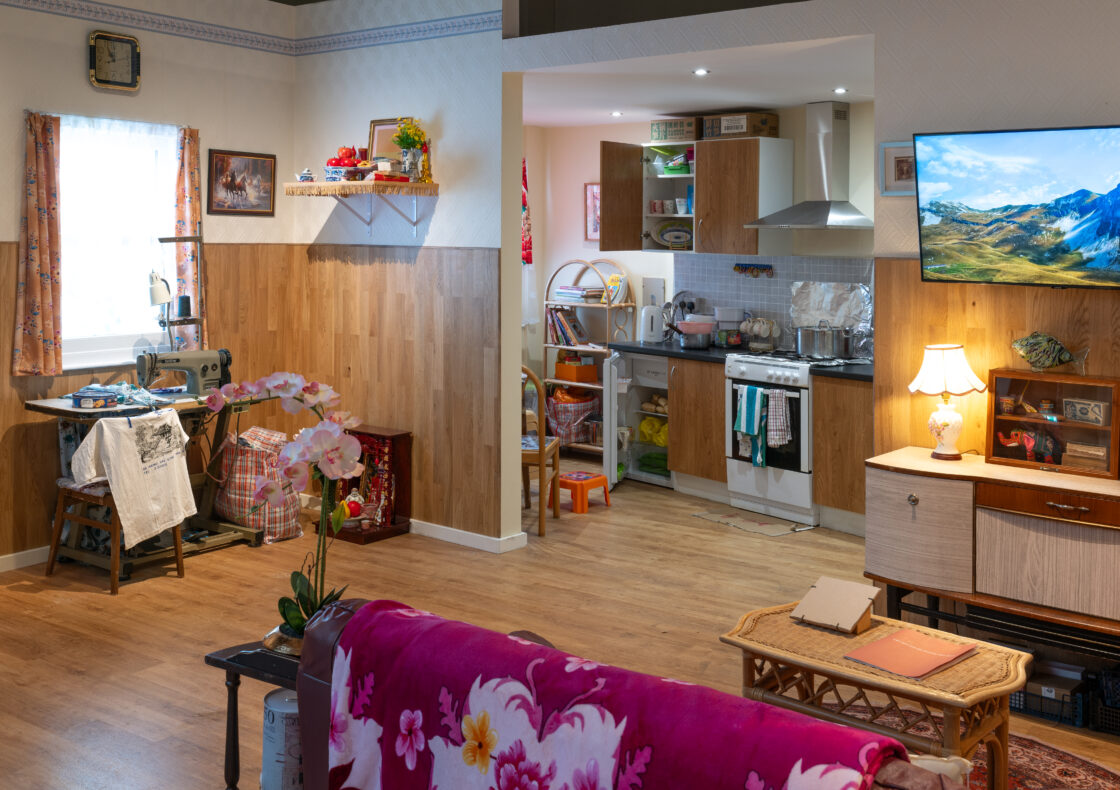Located in Saigon Court, a development run by the Islington and Shoreditch Housing Association, this house is typical of those built in the low-cost housing boom of the 1990s and 2000s.
It is Sunday afternoon and the Nguyễn family is spending quality time together. Nhung is visiting her parents for lunch and karaoke.
Hoa is showing her daughter how to prepare her special chicken phở, nudging her to pick some coriander and mint from the herb garden. Between dicing and chopping, Hoa shares memories from her childhood in Vietnam, speaking a blend of Vietnamese and English.
Their father Tiết is in the living room watching his favourite programme Paris by Night on his iPad and is enjoying the warming smells of star anise, cinnamon and ginger emanating from the phở broth in the kitchen.
This room was curated with the help of participants from the Vietnamese community and funded by Islington and Shoreditch Housing Association.
Objects to look out for

Weighing Scales
Thanh’s father worked as a Dim Sum chef in one of Chinatown’s first Chinese restaurants. Her father would take out these weighing scales and begin making an endless supply of dumplings and Char Siu (barbecue pork) buns. These were sold to close family and friends only; Thanh refers to this as the ‘underground dumpling network.’
Weighing scales, Credit: Museum of the Home
Industrial sewing machine
Tiết and Hoa obtained this sewing machine from a textile factory, where they worked as tailors when they settled in the UK. The job was accessible to them as they had learnt sewing skills in Vietnam, and the role only required a basic level of English. The couple used the machine for mending clothes and making textiles for the home.
Industrial sewing machine, Credit: Jaron James

Free digital guide
Explore Museum of the Home with our digital guide on Bloomberg Connects, the free arts and culture app.
